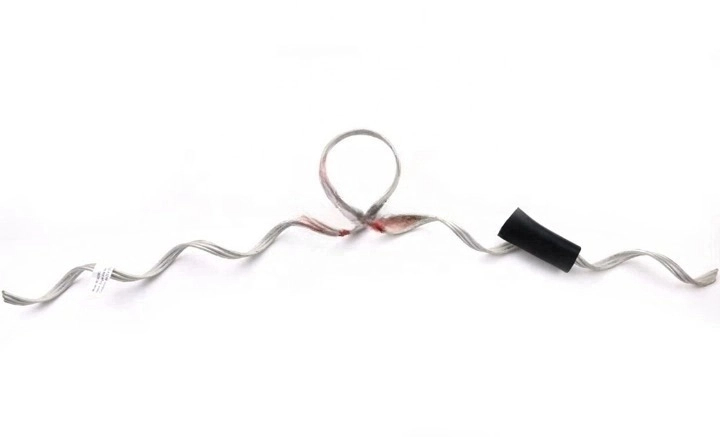
A spool tie is a component that secures a conductor to an insulator in overhead transmission lines. Its construction allows it to wrap around the conductor and insulator, keeping it in place. Spool ties consist of metallic wire or a substance that matches the conductor to prevent abrasion. It is also made of materials including aluminum, steel, and composites. Using spool ties helps to ensure electrical continuity and mechanical stability. Their primary role is to secure cables, dampen vibrations, and improve electrical continuity. Spool ties are commonly classified as prefabricated, hand-tied, or plastic. They work on transmission and distribution lines, telecommunications, and renewable energy projects.
What is the use of the spool tie?
The primary function of the spool tie is to secure and maintain the conductor’s location on the insulator. Spool ties offer stability, electrical continuity, and resistance to mechanical loads. Spool ties serve for the following applications in overhead transmission lines.
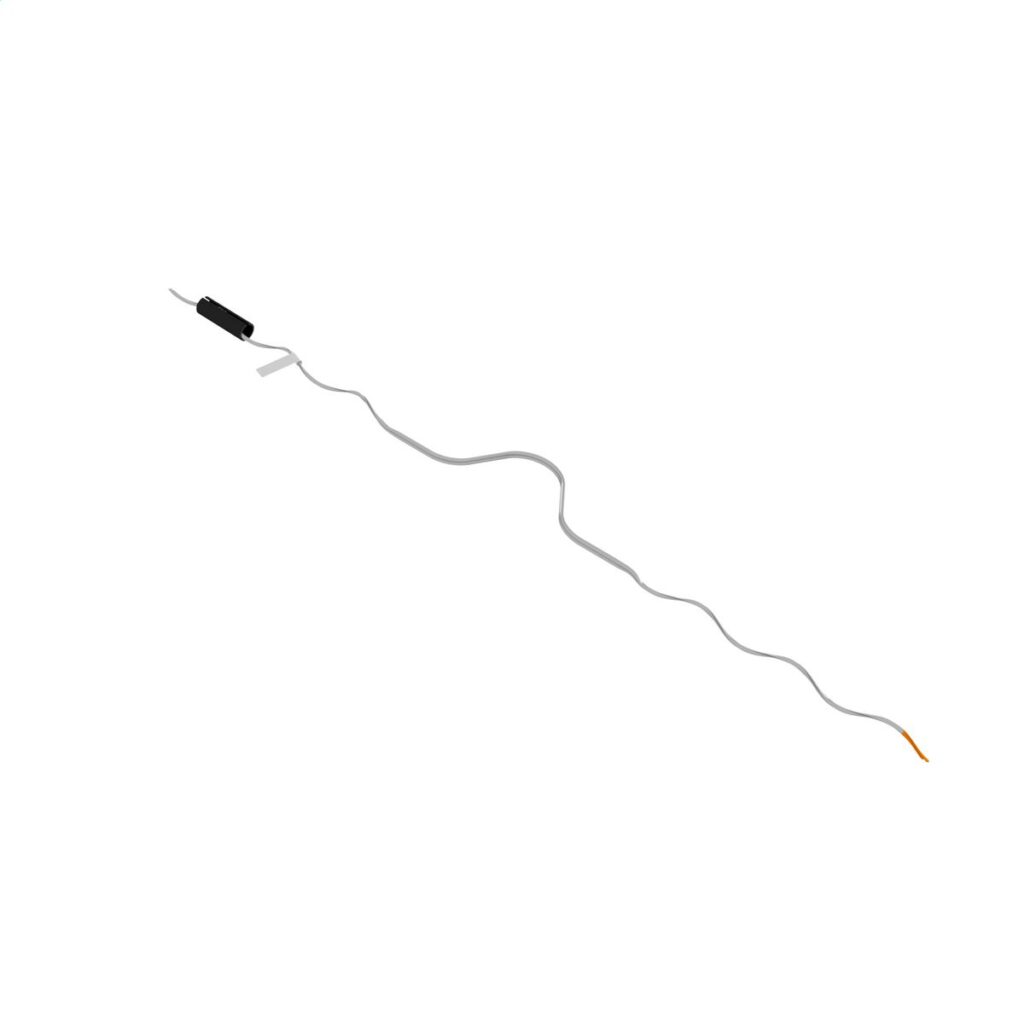
- Conductor security – this is the main function of the spool tie. It prevents the conductor from slipping or moving under various conditions. Spool ties also ensure the conductor’s alignment with the insulator. This is to maintain the electrical and mechanical integrity.
- Vibration damping – spool ties help reduce the amplitude of vibrations caused by wind or other factors. This reduces conductor fatigue and mitigates galloping.
- Electrical continuity – the ties also ensures good electrical contact with conducotrs. This reduces the risk of electrical faults like arcing. They also provide secure attachment which helps maintain the insulation properties of the transmission line.
- Protection against mechanical stress – spool ties help distribute the mechanical load across the insulator and conductor. They prevent the conductor from slipping off the insulator which could cause a disconnection.
- Ease of installation – spool ties provide simple installation procedures to reduce time and labor.
Performance features of a spool tie
There are several methods for analyzing the operation of the spool tie in overhead transmission lines. The performance qualities ensure that the electrical system remains stable and reliable. Also, the qualities ensure that the spool tie can hold the conductor and withstand a variety of loads. The spool tie has the following performance qualities.
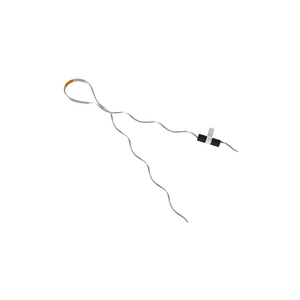
- Mechanical strength – spool ties must have enough tensile strength to withstand the mechanical loads applied by the conductor. They should also resist fatigue from continuous vibrations.
- Flexibility – spool ties should be flexible to accommodate variations in conductor size and shape. Flexibility helps in quick and efficient installation of the spool ties. This aims to reduce the time and effort necessary for maintenance.
- Electrical conductivity – the tie should have low electrical resistance to maintain electrical continuity. It also helps to prevent energy losses or heat generations at the point of contact with the conductor.
- Corrosion resistance – spool ties should resist corrosion to prevent deterioration in harsh environments. Materials like galvanized steel or aluminum are resistant to corrosion and prolong the service life of the tie.
- Temperature resistance – spool ties should maintain their mechanical and electrical properties across a wide range of temperatures. They should handle thermal expansion and contraction without losing grip.
- UV resistance – spool ties should resist UV radiance to ensure their long term performance. Exposure to UV radiation can degrade materials over time.
- Load distribution – the ties should distribute mechanical load across the conductor and insulator. This is to prevent localized stress points that could lead to failure. Proper design helps in reducing stress concentrations which can lead to damage.
- Secure grip – a spool tie must grip the conductor to prevent slippage which could lead to disconnection. The tie should be compatible with the conductor to avoid galvanic corrosion and ensure a firm grip.
- Durability – the spool ties should provide resistance to environmental factors. These factors include weather changes, pollution and physical stress. The ties should need minimal maintenance and contribute to cost effectiveness.
Cost Comparisons & Concerns for Spool Ties
Several factors determine the cost of spool ties. It is critical to consider both direct and indirect factors that influence expenses. These issues include material selection, manufacturing procedures, and adherence to standards. Also, taking these parameters into account allows firms to optimize their investments in spool ties. The following are the factors to consider while determining the cost of spool ties.
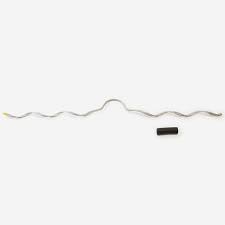
- Material costs – spool ties are from materials such as aluminum, galvanized steel, composite materials and plastic. Aluminum materials are lightweight, corrosion resistant and good electrical conductors. Galvanized steel has high tensile strength and are more affordable than aluminum. Composite materials are costlier due to advanced manufacturing processes.
- Design costs – preformed spool ties manufacture to exact specifications to reduce labor costs. Hand tied spool ties have lower manufacturing costs and flexibility for different conductor sizes.
- Installation costs – consider labor costs and equipment costs. Installation needs basic tools reducing extra equipment costs. Some spool ties may need specialized tools which increases costs.
- Maintenance and replacement costs – spool ties made from durable materials have longer lifespans. Lower quality materials need more regular inspection and maintenance. This contributes to the long-term costs of the project.
- Environmental and weather considerations – galvanized steel need maintenance to manage corrosion. Aluminum and composite materials cost higher due to their properties. High quality materials can withstand extreme temperatures and UV exposure.
- Logistics – local manufacturing offer lower transportation costs while distant suppliers cost more. Delivery to remote areas can increase costs for the spool ties.
- Bulk purchasing – bulk orders can lead to significant costs savings through volume discounts. Initial investment needs larger upfront investment but can reduce per-unit costs.
Supplier details for spool tie
Choosing the best source for spool tie needs careful consideration of many variables. These variables include quality, price, dependability, and value. Additionally, these characteristics add to the application’s success by allowing for more informed decision-making. TTF Power Systems offers a wide variety of power line products, including insulators, grounding gear, and conductor hardware. Contact us for more information and to learn about the items we offer. The following are some variables to consider while choosing spool tie suppliers.
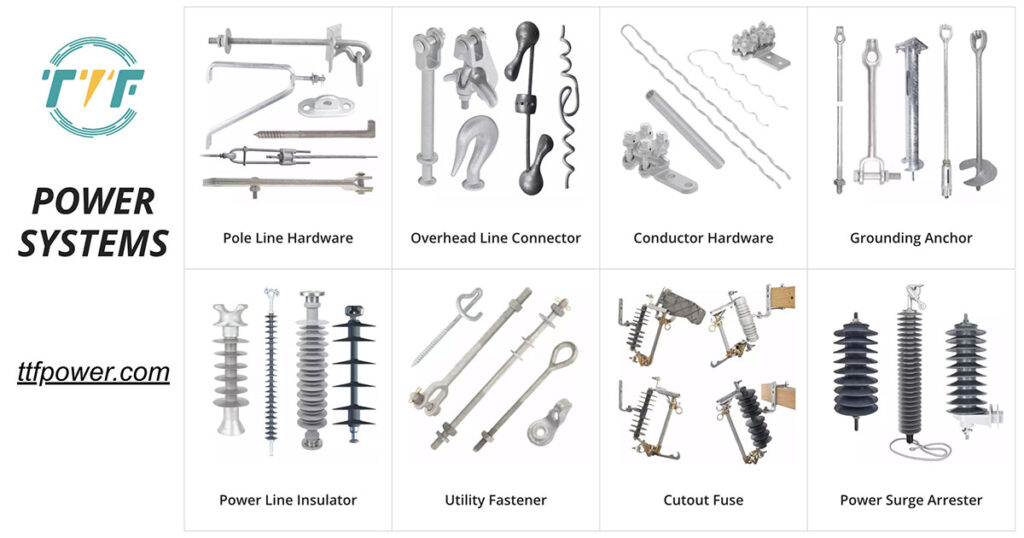
- Quality and reliability – ensure the supplier’s products meet relevant industry standards and certifications. Ensure the spool ties are from high-quality materials that match the conductor’s requirements. The supplier should have a proven track record of durability and performance.
- Cost and pricing – compare prices from many suppliers to ensure competitive pricing. The pricing should not compromise on quality. The supplier should provide clear and detailed pricing including any extra costs for shipping, taxes or customs.
- Manufacturing capabilities – ensure the supplier has the capacity to meet your current and future demands. Suppliers using the latest manufacturing technologies may offer high-quality products.
- Customization – select the supplier that is able to customize spool ties to meet your specific needs. They should provide products for different conductor sizes, insulator types and environmental conditions.
- Financial stability – assess the supplier’s financial stability to ensure they sustain long-term business relationships. Financial stability ensures the suppliers are less likely to face disruptions that could affect the supply chain.
- Technological capabilities – suppliers with advanced technological capabilities offer higher quality and more innovative products. They should also provide technical support and engineering expertise for customized solutions.
- Warranty and after sales support – the supplier should offer a solid warranty for the spool ties. The warranty should cover product defects and performance issues.
Challenges & Issues with the Use of Ties
Using spool ties in overhead transmission lines can present a variety of obstacles and issues. Understanding and addressing these difficulties can boost dependability and cost effectiveness. Also, overcoming these difficulties necessitates a strategy that includes selecting the appropriate materials and adhering to rules. The following are some of the most typical issues associated with using spool ties.
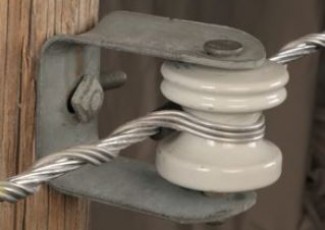
- Mechanical and structural challenges – spool ties have designs to withstand long term vibrations without degrading. Improper installation of spool ties can lead to uneven load distribution on the conductor and insulator.
- Environmental challenges – spool ties face exposure to weather conditions such as rain, snow and salt. Corrosion resistant materials may degrade due to constant exposure to harsh elements.
- Installation and maintenance – proper installation of spool ties need skilled labor to ensure they work correctly. They also need regular inspections to check for signs of wear, corrosion or damage.
- Electrical issues – corrosion can increase electrical resistance at the contact points. This leads to energy losses and potential heating issues.
- Cost and economic challenges – corrosion-resistant and durable materials can be expensive. This in turn impacts the cost of the project.
Frequently asked questions
The main purpose of the spool tie is to securely attach conductors to spool ties. They provide mechanical support and electrical connection. Spool ties also prevent the conductor from slipping or moving under mechanical stresses.
Common materials include aluminum, galvanized steel, composites, and plastics. The material used depends on the type of conductor, the environmental circumstances, and the needed durability.
Exposure to moisture, salt, and pollutants can cause corrosion, especially in metal ties. Thermal expansion and contraction can impact the fit and performance of spool ties. UV exposure can degrade certain materials over time, reducing their effectiveness and lifespan.
